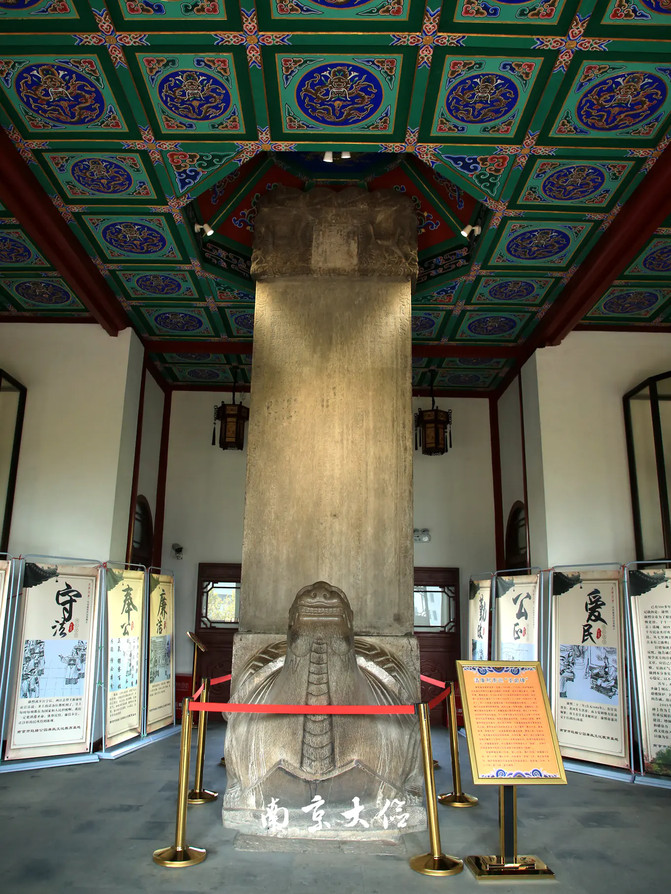Morning bells and dusk drums reveal the secrets of Nanjing Bell and Drum Tower
Bells and drums are traditional Chinese time-telling tools. In ancient times, people did not have clocks. In the morning, the bell sounded to remind everyone that it was time to go to work. In the evening, the drums should be a signal to get off work. Therefore, there is a saying that the morning bell and dusk drum are used.

Every city should have bells and drums, and Nanjing naturally has them. It is the Drum Tower in the center of the city. I heard that there is also a Bell Tower here, which looks at it on the west side of the Drum Tower.

The current Drum Tower was built in the 15th year of Hongwu of the Ming Dynasty (1382). At that time, the Drum Tower and Bell Tower were built in the center of the city in order to unify the time throughout the city and tell the time for the people in the city.

The Nanjing City Wall was built in 1366. Liu Bowen, the chief designer at that time, laid out Nanjing according to the Big Dipper Star and Nandou Star. Therefore, Nanjing's inner city was different from other cities due north and south, but opened thirteen gates based on the positions of the North Star Star and Nandou Star. The north and south gate is a central axis running from northwest to southeast. The Bell and Drum Tower is located almost in the middle of this line. At the same time, the direction of the Drum Tower is also parallel to the central axis and facing southeast, giving people a strange feeling. Moreover, it is estimated that the distance from the Drum Tower to Chaoyang Gate (Zhongshanmen) in the east, Jubao Gate (Zhonghua Gate) in the south, and Yifeng Gate in the north is almost equal.

The Bell and Drum Tower of the Ming Dynasty was large in scale and of extremely high specifications. In addition to providing time telling, it was also used to welcome kings, select concubines, receive imperial edicts, and hold major celebrations. It was a landmark building in the capital of the Ming Dynasty.

However, the Bell and Drum Tower was also plagued by disasters. After several human factors and wars, the bell tower was completely destroyed during the Kangxi period of the Qing Dynasty, leaving only the rusty bell trapped in the dust. The situation of the Drum Tower was slightly better, and the tower above was damaged and disappeared, leaving only the bare city platform standing in the center of the city.

In November of the twenty-third year of Kangxi (1684), Emperor Kangxi visited Jiangning Prefecture (Nanjing) in the south to cure the Yellow River and rectify the administration of officials. He climbed the dilapidated Gulou City Tower and looked around from a high altitude to see the beautiful scenery of Jinling.

Before returning to Beijing, Emperor Kangxi warned local officials to "purify themselves and love the people, abide by the public and abide by the law, stimulate the chaos and promote clarity, and be considerate of the people's seclusion." The following year, Wang Xinming, then governor of Liangjiang, and others carved this sacred encyclical into stone and planted a "Jie Monument" in the middle of the Gulou City Platform. In order to protect this Monument, a tower was rebuilt on it. Since Kangxi once climbed the Gulou City Platform, the rebuilt Drum Tower was renamed "Changguan Tower", also known as the Monument Tower, so the Drum Tower is known as the "Minggu Qing Monument".

The damaged bell tower was not rebuilt, but Xu Zhenwei, a fan of Jiangning in the late Qing Dynasty, moved the only remaining bell to the current location of the Big Bell Pavilion, and built a six-corner pavilion with iron beams and iron pillars. The Ming Dynasty bell was hung in the pavilion. This pavilion was named "Big Bell Pavilion." This copper bell is exquisite and beautiful in shape, and has a loud voice. The top is embossed with lotus petals. The lifting beam is decorated with cloud patterns and wavy horns. The bell has the inscription "Made on an auspicious day in the 29th year of Hongwu".


In the twelfth year of the Republic of China (1923), with Nanjing Drum Tower as the main body, the Drum Tower Park was built here for citizens to visit.


Today's Drum Tower is no longer what it used to be. It is surrounded by high-rise buildings. Zifeng Building, the tallest landmark in Nanjing, is next to the square. There is a beautiful green carved roundabout in the center of the square. Two green peacocks are also a sight in the city. The Drum Tower and the Big Bell Pavilion are both small parks in the city.


Previous Article:Xuanwu Lake, known as the "Pearl of Jinling", has no less scenery than Hangzhou's West Lake. Have you been there?
Next Article:Spring weekend, vertical and comfortable journey-Journey to Nanjing
